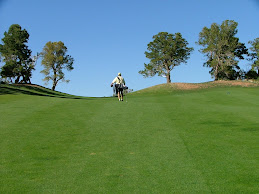 Recently a very useless piece of golf literary paraphernalia has been brought to my attention. It is a survey piece on GolfDigest.com that delves into Golf's 'Other' Rules. These are not the sacrosanct rules of the game so meticulously elaborated by the USGA and the R&A. Rather these are the nuances of etiquette that we encounter everyday at every golf courses.
Recently a very useless piece of golf literary paraphernalia has been brought to my attention. It is a survey piece on GolfDigest.com that delves into Golf's 'Other' Rules. These are not the sacrosanct rules of the game so meticulously elaborated by the USGA and the R&A. Rather these are the nuances of etiquette that we encounter everyday at every golf courses.For instance, does your favorite course allow denim? How about collarless shirts? What about the combination of both. Survey says ...
COURSES THAT ALLOW DENIM (BLUEJEANS)
PRIVATE: 37%
PUBLIC: 68%
THOUGHT: Frankly, if you want to wear bluejeans and a tee shirt and play golf, find an empty framer's field and have a go.
And here's another etiquette gem in our modern golf world: cell phone usage. Survey says ...
COURSES THAT ALLOW CELL-PHONE USAGE
PRIVATE: 83%
PUBLIC: 98%
18% of all courses that allow cell phones forbid their use on the golf course.
THOUGHT: If you really need to use your cell-phone, stay off the golf course.
And last, but not least in the survey ...
COURSES WHERE GOLF CARTS ARE MANDATORY
PRIVATE: 13%
PUBLIC: 11%
THOUGHT: If a golf course informs you that carts are mandatory, you know that course does not have the game of golf at heart (nevermind your own heart-health). You'll know it's all profit motive. Find another track for your ball.
There's more in the survey, so have a read. It's fun but it will also stir your interest.































